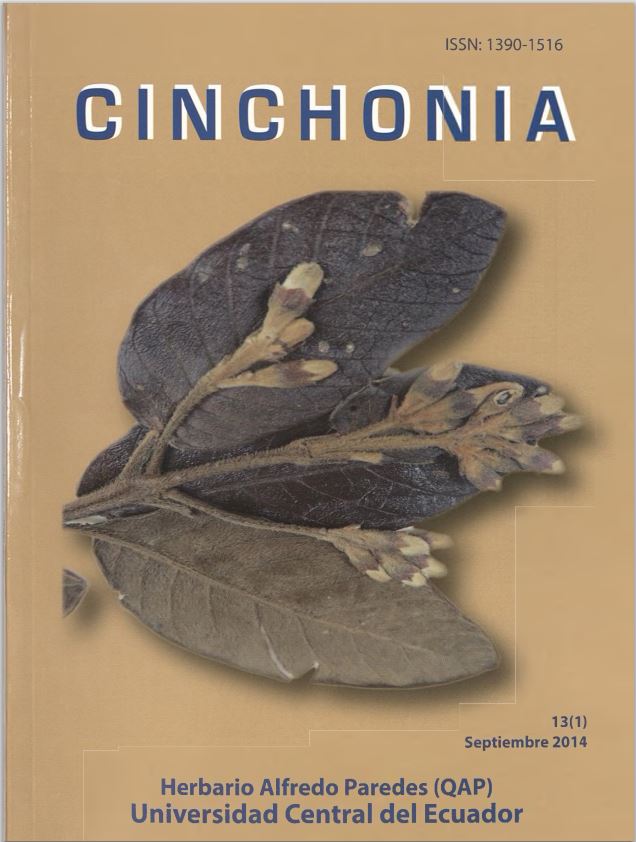EL BOSQUE COMUNITARIO COFÁN - ZÁBALO: CONSERVACIÓN, DIVERSIDAD, DOMINANCIA Y USOS DE LA FLORA, SUCUMBÍOS - ECUADOR
Main Article Content
Abstract
The Cofan community of Zabalo, is located on the shore of the Aguarico River, it is an area of influence of the Reserve of Cuyabeno Faunistic Production, province of Sucumbíos, coordinates 00 ° 22.00’ S - 75 ° 39.23’ W, altitude 300 m, life zone tropical humid forest, and plant formations consisting of varzeas, igapos, moretales and shrubbery. On May of 2007, 2008 and 2009, 10 locations were sampled, through the methodology of transects; the ethnobotanical information was taken in situ, through informal discussions with members of the Cofán community and to a lesser proportion Siona, mainly with Messrs. Mauricio Mendua and Carlos Yiyohuaje. Statistically the floristic data, were analyzed by using the index of diversity of Simpson, similarity of Sorensen and basal area. The number of individuals in each set of transects, ranges between 117 - 593, and the species among 34 - 96; the values for the index of diversity of Simpson, are between the low and on the media. The basal area varies between 2.7 and 7.7 m²; while the index of similarity ranges between 0% and 34.4 % of similarity. The species most frequents are: Iriartea deltoidea, Leonia cymosa, Otoba parvifolia, Oenocarpus bataua, Oxandra euneura, Matisia malacocalyx, M. oblongifolia, M. obliquifolia, M. bracteolosa, Mauritia flexuosa, Phytelephas tenuicaulis, Heliconia episcopalis, Neoptychocarpus killipii, Iryanthera paraensis, Calycophyllum spruceanum, Brownea grandiceps, B. macrophylla y Warszewiczia elata. There were 457 recorded plant species useful in keeping with the indigenous nomenclature: 303 species include monomials Cofán names, 206 binomials, 7 trinomials and a name of Spanish origin; 56 Siona monomials names and 22 binomials. The division with the largest number of species are Magnoliophytas, other dominant characteristics are native plants, the arboreal habit, and the category of using food for wild animals, the whorls fruit and stem, and the species with more uses: Hirtella excelsa and Socratea exorrhiza. Probably one of the best current strategies that the Cofán community of Zábalo, have adopted and docked to the conservation of the forest and the use of the same in a rational way and friendly, it is community participation in the activities related to the Ecotourism.

